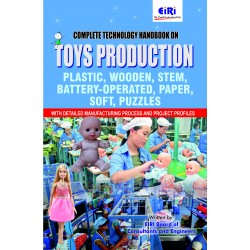Beyond their role as playthings, paper toys have found a new purpose in the realm of therapy and mindfulness. The act of assembling paper toys, with its repetitive and focused nature, has been embraced as a therapeutic activity for individuals of all ages.
For children, crafting paper toys fosters cognitive development, encourages creative thinking, and provides a sense of accomplishment. In the context of therapy, paper toys have been utilized to improve fine motor skills, enhance concentration, and reduce stress and anxiety. This therapeutic potential extends to adults, offering a relaxing and meditative pastime.
As we look ahead, the world of paper toys manufacturing is poised for further innovation and growth. With a renewed emphasis on sustainability, creativity, and well-being, paper toys are likely to continue capturing the hearts and minds of generations to come.
The global paper toys market will witness the emergence of new designs, materials, and technologies, making paper toys more engaging and interactive than ever before. Whether as educational tools, therapeutic aids, or sources of pure joy, paper toys are here to stay, reminding us all that the simplest of creations can hold the power to inspire and delight.
Restraints: Balancing Tradition in a Digital Age
While paper toys have a devoted following, they are not without challenges. In an era where digital entertainment and high-tech gadgets dominate, paper toys must compete for attention. The digital age has brought forth new forms of entertainment that can be more captivating to children, often featuring interactive screens, augmented reality, and virtual worlds. Convincing the younger generation to embrace the tactile pleasure of paper toys can be a significant challenge.
Moreover, the delicate nature of paper toys means they may not withstand rough handling, limiting their durability compared to plastic counterparts. This fragility can be a concern for parents and caregivers who want toys that endure the rigors of play.
Tough Competition with Plastic Toys and Technology
The prevalence of plastic toys and digital devices poses a formidable challenge to paper toys. Plastic toys, known for their durability and versatility, have long dominated the toy industry. The rise of technology has added another layer of competition, as children are drawn to smartphones, tablets, and video games.
To stay relevant, paper toy manufacturers must find innovative ways to merge the charm of analog play with digital experiences. Some paper toys now incorporate augmented reality apps, allowing users to bring their creations to life through smartphones or tablets. This blend of the physical and digital worlds represents a promising avenue for the future of paper toys.
Global Paper Toys Market - Segmentation
The global paper toys market is a diverse landscape, encompassing various segments to cater to different preferences and interests. It can be segmented based on factors such as:
Age Group: Paper toys are designed for a wide range of age groups, from toddlers to adults. Each segment features age-appropriate designs and complexity levels.
Type: The market includes diverse types of paper toys, such as pop-up books, paper model kits, origami, and interactive dioramas.
Themes: Paper toys often follow specific themes, from animals and vehicles to architecture and fantasy worlds.
Distribution Channel: Paper toys can be found in retail stores, specialty toy shops, and online marketplaces.
Global Paper Toys Market of Consumer
The consumer base for paper toys is diverse, encompassing several key groups:
Children: Traditional users of paper toys, children are drawn to the whimsical and imaginative nature of these creations. Paper toys stimulate their creativity and fine motor skills.
Parents and Educators: Parents appreciate paper toys for their educational value and ability to engage children in hands-on activities. Educators often use paper toys to enhance learning experiences in the classroom.
Collectors: Some individuals, both young and old, are avid collectors of paper toys. They value the craftsmanship and artistry that goes into these creations.
Therapy and Wellness: Paper toys are increasingly used as therapeutic tools for individuals seeking stress relief, mindfulness, and enhanced focus.
Eco-Friendly Paper Toys: A Sustainable Choice
Amid growing environmental concerns, eco-friendly paper toys have gained popularity. These toys are crafted from sustainable materials, often using recycled or FSC-certified paper. Manufacturers prioritize eco-conscious practices in both production and packaging, making paper toys an environmentally responsible choice for consumers.
Eco-friendly paper toys align with the global push toward sustainability and reduced plastic consumption. As more individuals seek greener alternatives, the demand for these toys is expected to rise.
Paper Toys Market Future: Navigating New Horizons
The future of the paper toys market holds promise, driven by a blend of tradition and innovation. Manufacturers will continue to explore creative ways to engage audiences, leveraging technology to enhance the paper toy experience.
While competition with plastic toys and digital devices persists, paper toys will adapt, incorporating digital elements to stay relevant. Augmented reality, interactive apps, and online communities will likely become integral components of the paper toy landscape.
Eco-friendliness will remain a central theme, attracting environmentally conscious consumers who value sustainable choices. Paper toys have a unique advantage in this regard, as they are inherently biodegradable and recyclable.
As we venture into the future, paper toys are poised to endure, offering a timeless and tactile form of play that sparks imagination, fosters creativity, and brings joy to people of all ages.












